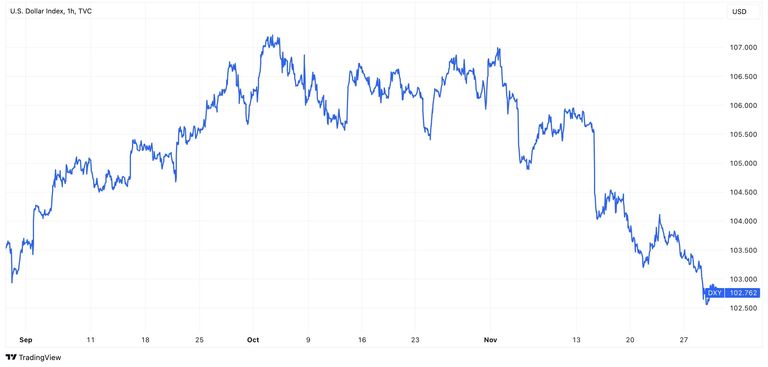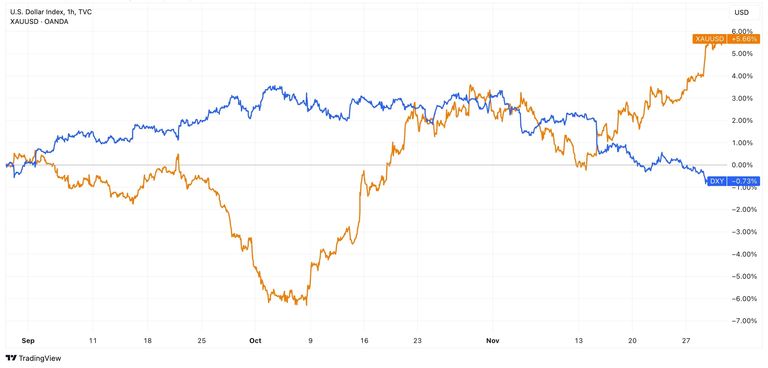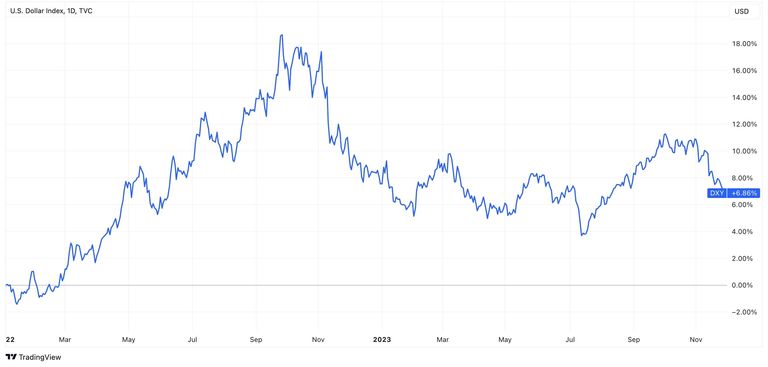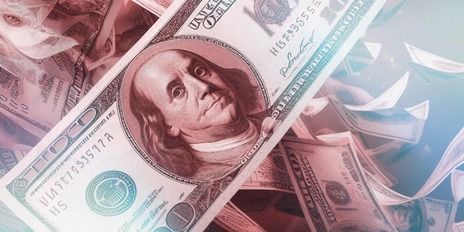The US dollar has finally commenced its wait-for-so-long decline. At least, It looks that way. The DXY index has been on a downward trend since October reaching its lowest value since August. Let’s explore if the challenges for the dollar are just starting or if this marks a new normal we need to get used to.
The DXY chart for the past three months may reveal the closing chapters of the USD's early 2020s dominance. Whether we want it or not, we have been witness to historic events – the Federal Reserve has pursued such an aggressive policy for the first time in nearly 50 years, and the growth of the US dollar during this period could be deemed legendary. Below, you might be witnessing the initial stages of a new era (or maybe not, of course), but anyway, these months definitely haven’t been the USD's best.

When the US dollar depreciates, some assets traditionally experience an uptick. Gold is one of such assets, as indicated by the inverse correlation pattern in the chart for XAUUSD. If you are looking for some alternatives to the USD, gold could be one of your answers.

Anyway, let’s get back to the DXY index. The chart from 2022 suggests that things aren't entirely bleak – the dollar has only lost about half of its gains against the basket of major currencies so far.

The US dollar decline has been anticipated for quite some time, dating back to the end of the summer of 2022. During that period, many experts forecasted that the Fed was on the verge of initiating an interest rate decrease while other central banks had to push them actively. These expectations initially led to a modest drop in the USD, but when they weren't met, the decline shifted into high gear.
Presently, the landscape appears different. Market participants have greater confidence in the Federal Reserve's next actions. Experts are convinced that the interest rate hike cycle is complete. Furthermore, even Fed officials endorsed the current key rate level as sufficient to reach the inflation target.
Moreover, most experts are fixated on the future, not the present, engrossed in forecasts of when the US central bank will execute its first interest rate cut. Many of them believe that the X-day could come in May, though others anticipate that in the first quarter of 2024. Undoubtedly, these discussions and expectations are putting pressure on the USD.
The US dollar's rate and US bond yields are both decreasing, creating a snowball effect. The currency is losing its appeal to investors, prompting them to explore other options such as different currencies, stocks, and gold. Notably, the rapid ascent of cryptocurrencies deserves special attention.
Clearly, the outlook for the USD is in serious doubt. However, as you're well aware, market conditions can be highly variable. Remember to conduct your own research and analysis. Who knows, perhaps you're the one who believes the USD situation isn't as straightforward.
